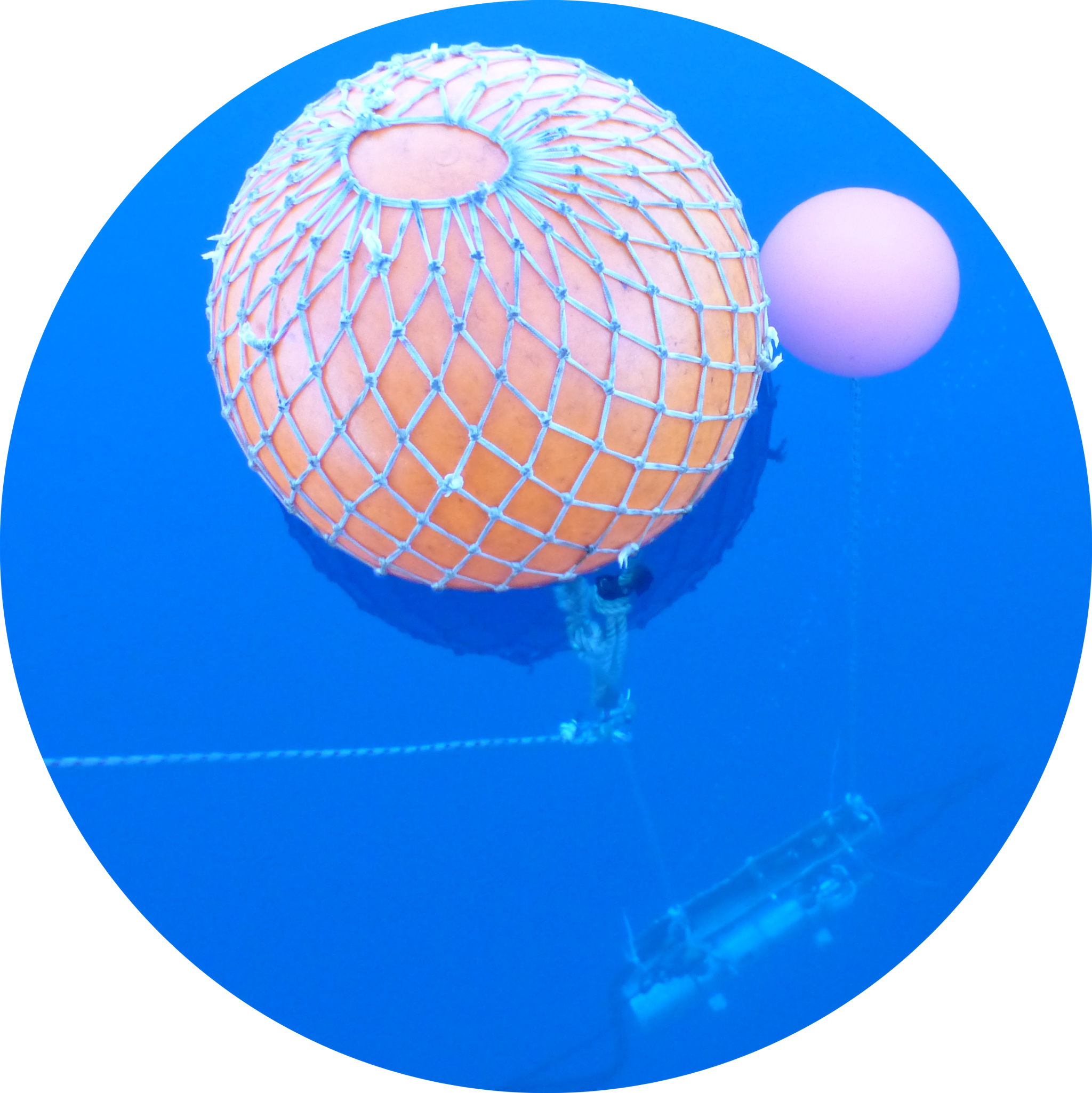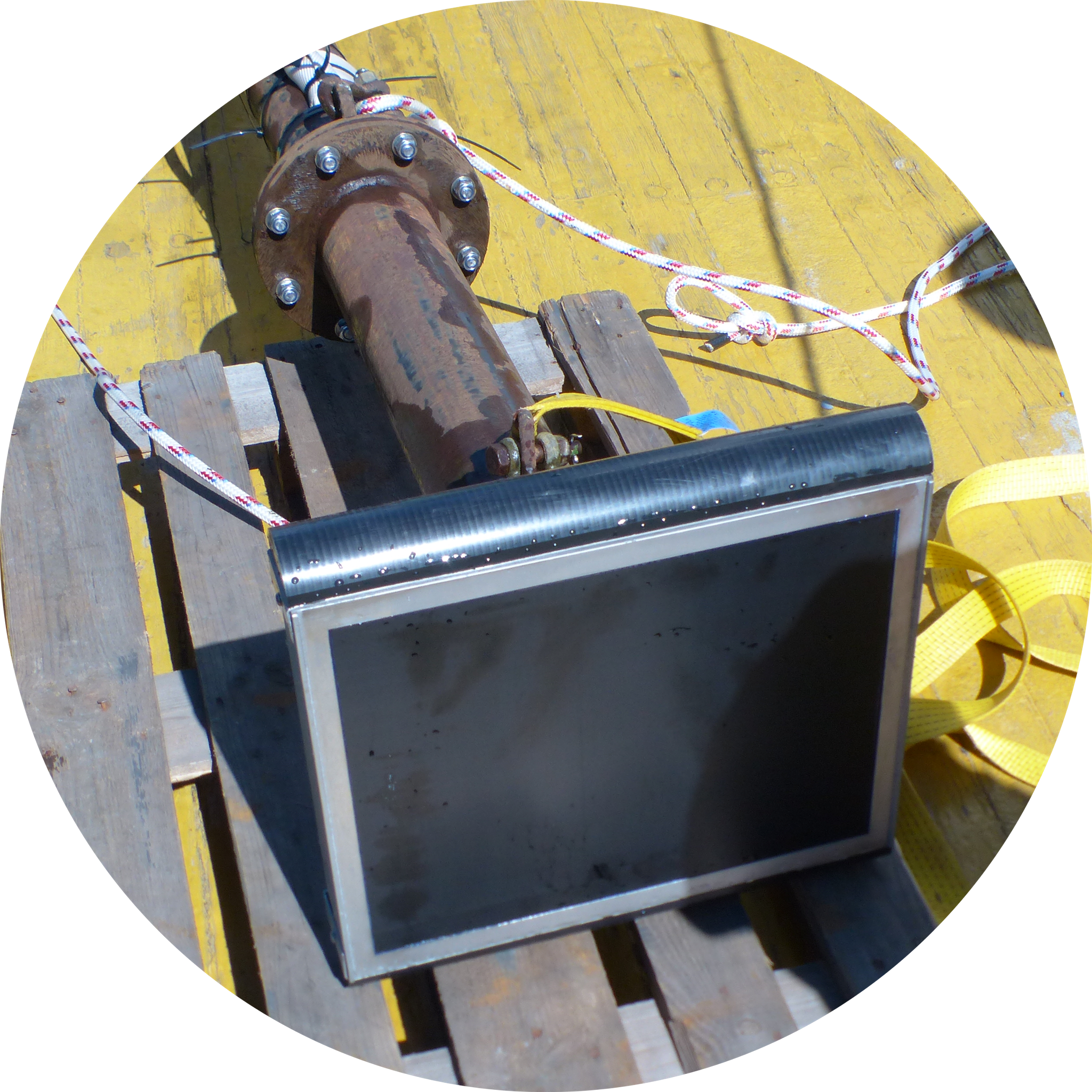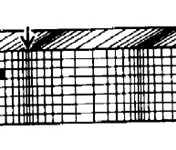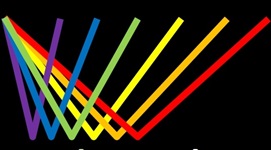Sound ))) ((( Listen
 To make sound ...,
To make sound ...,
... our human voice uses a very complicated organ, which is loud in air, but has a relatively low energy. But to reach over longer distances, higher energy is needed, particularly under water.
In the early days, explosives have been used, thrown over board in regular time intervals. An important application was refraction seismology, frequencies are way below 100 Hz. With the invention of airguns, compressed air of very high pressure (>100 bar) is released and sound is generated during the explansion of the air bubble. The smaller the airgun volume, the higher the frequencies, main frequency can vary from 50 Hz to >500 Hz. This sound source is sustainable, but very loud, and potentially harmful to living species, as are many other sound sources in marine seismic work.
Another way to generate sound is to release water into water, called watergun principle, which causes negative pressure, the fallout of dissolved air and a subsequent collapse, which is generating the sound with frequencies up to 2000 Hz..
The sparker technology is based on electric energy, which generates a spark between electrodes, associated with the generation of an airfilled channel. The collapse causes a relatively high-frequency sound wave, a multple electrodes a high energy sound signal. Also this source is able to generate frequencies up to 2000 Hz.
For higher frequency signals up to 20'000 Hz, oscillating membranes are used in socalled boomers, which are triggered electrically. Sound emission is restricted, and beam width depends on frequency and membarne diameter.
 In this same frequency range, also piezoelectric transduces are used in socalled echosounders, and depending on their design and resonance behaviour, frequencies can generated from a few kHz up to 1000 kHz.
In this same frequency range, also piezoelectric transduces are used in socalled echosounders, and depending on their design and resonance behaviour, frequencies can generated from a few kHz up to 1000 kHz.
Our seismic ears ...
... are recording underwarter sound as electrical voltage, which needs then to be translated into seismic information either graphically on paper (until the 19980's) or by analog-to-digital conversion (A/D) as digital data on appropriate media. Various ways have been developed. for this either hydrophones are used or transducers, which can also be used for sound emission.
Hydrophones are quite simple transducers, or nowadays films, which can be produced in large quantities. They were assembled in groups at regular intervals between a few and 25 meters and the groups electrically connected to a recording instrument on a ship with very long wires. This assemblage is called a streamer. Depending on the number of groups (=channels) they can be several kilometers long.
In the recording instrument, very low voltages of hundreds of microVolts or a few milliVolt are digitized with 16bit, 24bit or 32bit A/D converters and stored in standard formats, as e.g. SEG-Y or SEG-D. Echosounders data have been also digitized, but later than in the seismic world because of the higher freuqencies and faster sampling rate required. The first system for sediment echounders (ParaDigMA) was installed in 1989 by MTU and led to a rapid transition to digital acquisition. Today, all kinds of echosounders are designed as digital systems.
... but how to record and preserve?
Seismic acquisition
Media
Watch and listen to a 4.1 L airgun shooting on Lake Issyk-Kul. This is the biggest volume airgun, we are operating, but only rarely. It generates very low frequencies (10-100 Hz) to penetrate several kilometers deep.
Video (c) V. Spiess
But our interest os high-resolution seismic and we therefore prefer smaller volume airgun or other seismic sources. The smallest one is 0.1 L micro GI Gun, which generates 50-500 Hz, but also depending on towing depth.
Video
What is SeismoAcoustics?
Sound
Waves
Acoustics
Seismics
Seismology
Transducer
Hydrophone
Streamer
Airgun
Sparker
Boomer


